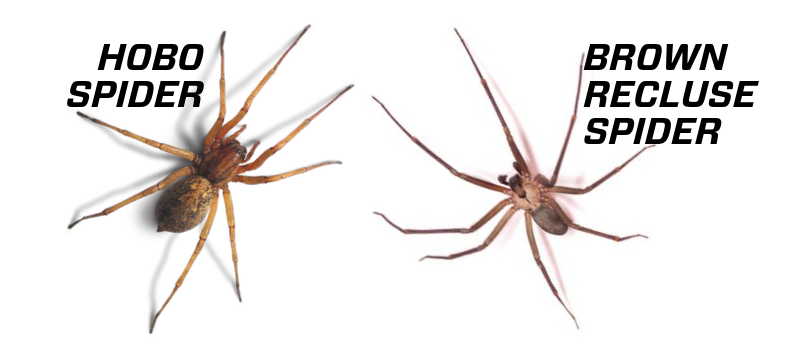

In fact, some of these predators include other types of spiders, such as wolf spiders, jumping spiders, and European house spiders. Predatorsįor many insects and spiders, the hobo spider is feared predator, but it also has some natural enemies that will prey upon it. Symptoms include nausea, joint pain, headache, weakness or fatigue. A victim usually will notice a blister at the bite location, and other symptoms may appear 24 to 36 hours later. The bite of a hobo spider is similar to that of a brown recluse in that it can cause necrotic (tissue destroying) wounds, but it is not fatal. Indoors, hobo spiders can be found in damp areas likes crawl spaces or basements. Nests are usually constructed near the ground. Their webs, also called nests, can be located in woodpiles, gardens, under sheds or rocks, or next to a building’s foundation. They eat insects and some species of spiders as well. The spider will hide at the narrow end of the web to await an unsuspecting invader. The webs have a wider end and then narrow into a crevice or other protected area. Hobo spiders build funnel-shaped webs to ensnare prey. The northern limit of range potential for this species in coastal areas probably extends far beyond the current known range, as the climatic conditions in these regions are amenable to its establishment. The southern limit of its range potential in the United States may be at approximately the 37th parallel (in Utah at least), while the limit of its range potential east may extend to the east coast. While it probably cannot readily adapt to extremely dry, xeric habitats, it adapts well to situations with adequate moisture and relatively cool climates. The hobo spider is an arachnid species with a demonstrable capability of extending its range into new territories and adapting to many types of habitats. They create funnel-shaped webs where they can hide and await prey. Hobo spiders can be found in moist, dark areas such as crawl spaces or basements, and outdoors, under firewood piles, sheds, or rocks. See map for the current known range of this spider. The hobo spider may now be expected to occur in central Alberta, Canada, south and northwestern British Columbia, and coastal regions of extreme southern Alaska. However, the presence of the hobo spider seems to be extending into new areas rather quickly. The hobo spider has been identified in southern states, but is not known to inhabit the Southwest. To this day, the western hobo spider is most commonly encountered in the Northwest, including Washington, Oregon, Idaho, northeastern Utah, Colorado, western Wyoming, and western Montana. They are light to medium brown with a lighter stripe down the center of the cephalothorax and darker stripe to either side. Hobo spiders generally live for about two years. Hobo spiders mate in the fall, and the female usually lays her eggs in September or October. Male hobo spiders wander throughout the summer seeking a female. More about what Hobo Spiders look like (with pictures).īoth sexes have an elongated abdomen. If it has stripes on its cephalothorax, it is not a hobo spider.Īdult female hobo spiders reach approximately 0.5″ in body length, while the males are closer to ¼” or so.If its palp are long and pointed, it is not a hobo spider.If its legs are shiny and missing fine hair, it is not a hobo spider.If you can see dark rings around the spider’s leg, it is not a hobo spider.Giant house spiders are often misidentified as hobo spiders. Both of these spiders will only bite if they feel threatened. However, the bite of a hobo spider has not proved fatal in healthy people. Hobo spiders are sometimes confused with brown recluse spiders, in part due to their appearance, but also because their bites are believed to cause similar symptoms, most notably, necrosis, or tissue death. Funnel-web spiders can move rapidly, and the hobo spider should be capable of running at a velocity of almost four feet per second. They are a member of the funnel-web weaver spider family, Agelenidae. The western hobo spider was introduced to North America from Europe, by way of immigration and trade, and was first discovered in Pacific Northwest ports. It predominantly inhabits the northwest area of the United States. It has been known to hitch rides in cargo shipments or with people, hence the “hobo” name, and thereby has begun to establish its presence in other regions. The hobo spider is also known as the aggressive house spider.


 0 kommentar(er)
0 kommentar(er)
